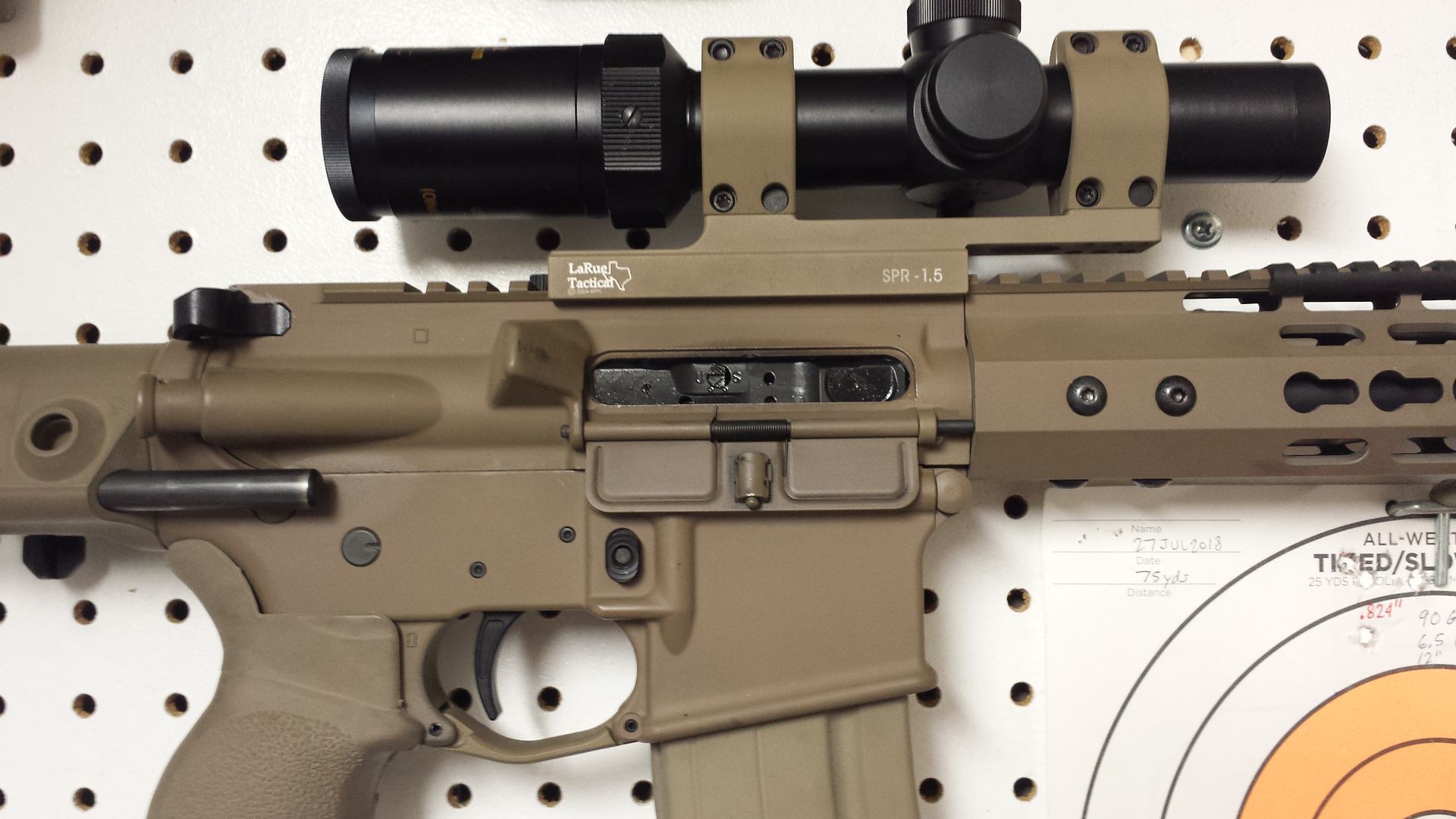You don’t want to use a .125” bolt face recess with any of the PPC-based cases due to the rim thickness, which demands a certain extractor lip thickness. Grendel bolts use .136” (-.003”/no +). They are also longer on the tail so you get the same firing pin protrusion with standard pins due to the face being set back around .010”. Bolt overall length on an optimum-built Grendel bolt should be at 2.810-2.811”.
Quality Grendel bolts are made from a particular type of AQ 9000 series alloy, and there are radiuses at different places to increase the lug root strength. If you ever look at a SCAR-17 bolt, it has very thin walls as well around the lug roots, but they use a higher-end alloy to make it viable with a much higher pressure cartridge (7.62 NATO), with far more bolt thrust.
Last time I ran the Grendel bolt thrust calculations, it was on-par with 5.56 bolt thrust. Bolt thrust isn’t measured in chamber pressure, so trying to equate it with that doesn’t make a lot of sense. One of the top engineers in the industry did all the work on designing and testing the Grendel bolt and extractor, based on his experience already with the .50 Beowulf bolt, which was engineered from where Colt left off with the 7.62x39 Sporter.
Extractors have to be dialed-in with metallurgy, ideal tool steel, and geometry. The extractor pin locations is different too, based on the need to snap over a much larger diameter case head within the constraints of the standard AR-15 barrel extension, which has to be kept to tighter tolerances of concentricity/uniformity than a rack-grade 5.56 extension. Many of the 5.56 barrel extensions on the market don’t meet the M16/M4 TDP to specific dimensional call-outs as it is.
I really like the BAT Machine extensions if you’re sourcing an extension for this build.
I’ve been shooting 6.5 Grendel in significant volume since 2009 across multiple barrel lengths from 22” RLGS down to 12” CLGS, and everything in-between, with several large boxes of spent brass to prove it. I still haven’t broken a bolt.
The main configuration that is notorious for breaking bolts in any of the modern cartridges in the AR-15 is 18”, MLGS, too large of a gas port.
I don’t care what cartridge you shoot between 5.56, 6.5 Grendel, with maybe the exception of .204 Ruger. If you have that much plug dwell time past the port with a large port, you’re going to suffer from early unlocking while there is still residual bolt thrust, which causes torsional loads that will exceed the ability of the bolt lugs to hold up-especially the lugs adjacent to the extractor pocket.
Same thing with a suppressed 10” gun with too large of a port. Adding a high efficiency suppressor (non flow-through design) to an already excessive-gassed system will put undue torsional stress on the bolt.
On 6.5 Grendel, any time I see a MLGS gas port on either an 18” or even 16” barrel that is larger than .076”, I won’t even mess with that barrel unless the gas can be choked off with a plug.
Due to the 6mm ARC having a similar case capacity and SAAMI MAP, but with a smaller bore volume, I think I would lean towards a longer gas system length to keep the port pressure down, especially if shooting the long 103-108gr class of high BC bullets. In fact, some companies are even using an ELGS +2” on 18” barrels, let along 20” and longer.
Controlling the port pressure will be key in setting up for optimum window of the cyclic rate for the AR-15.
I know a lot of the AR-15s chambered in 6mm AR use ELGS as well, so there are many years of experience already on what it takes to make a 6mm Grendel run well.
The other limiting factor for AR-15 pressure containment is the length of the barrel extension lugs, which keep you in the 55,000psi chamber pressure limit once you get into case heads that are larger than the 5.56.





















